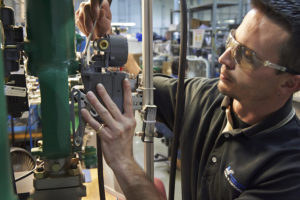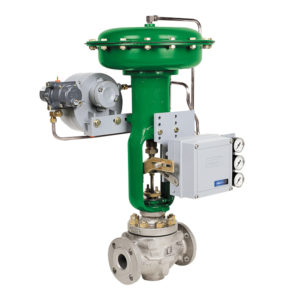 Digital valve controllers (DVCs) can provide a host of benefits to your plant, including a minimized chance of valve failure, reduced testing and maintenance time, and improved system performance. But they can cause frustration and headaches when they don’t work correctly. The good news is that most DVC issues are easily resolved with simple troubleshooting.
Digital valve controllers (DVCs) can provide a host of benefits to your plant, including a minimized chance of valve failure, reduced testing and maintenance time, and improved system performance. But they can cause frustration and headaches when they don’t work correctly. The good news is that most DVC issues are easily resolved with simple troubleshooting.
This article briefly reviews what a digital valve controller is, and then provides 10 things to check if your DVC isn’t working correctly. To skip the intro and just download a pdf of the checklist, click the button below:
What are DVCs?
DVCs are “the brains” of a control system. They are positioners that help regulate the position of a control valve by monitoring input from a transmitter and using that input to open or close a control valve. DVCs can be used anywhere control valves are used — pipelines, steel mills, oil refineries, paper mills, chemical plants, breweries, and so on.
A common use of DVCs is to regulate back pressure. When fluid is being transported through a piping system, pressure builds up. To prevent that pressure from building up so much that it causes a problem, many systems use pressure transmitters to monitor the pressure and send the signal back to the DVC, which then sends a signal to the control valve to open or close.
DVCs are also used to regulate control valves in processes that involve mixing ingredients together, like food and beverage production. The valves control how much of each ingredient is goes into the final product, and the DVC ensures the accuracy of the control valve movement.
Troubleshooting your DVC
There are several reasons DVCs can stop working correctly or at all. Most of them have to do with the initial setup and configuration of the device, but some are related to external events, like power outages.
If you aren’t getting the optimal performance from your DVC, here are 10 things to check:
- Did you fully complete the initial setup wizard?
- Is your DVC configured for your specific actuator type and size?
- Have you set the travel of your actuator?
- Do you have the correct device description for your DVC installed in your HART?
- Have you manually checked your relay and I/P converter to ensure they’re working properly?
- Have you recently lost power? Your DVC may have gone into a test mode. Reset it to analog or digital control mode.
- Is your zero control signal configured correctly? If not, our tech support team can walk you through the process to change it.
- Have you properly set up any advanced preferences with your communicator?
- Is a power supply connected to the DVC?
- Is your DVC configured for digital or analog control mode?
If you need help working through these steps, or if you’ve worked through them and are still experiencing a problem, we can help. Here are three easy ways to contact us:
- Give us a call at (800) 325-4808.
- Fill out our Contact Us form.
- Chat with us using the chat bubble in the bottom right-hand corner of this page.
For a printable version of this checklist, click the button below.


